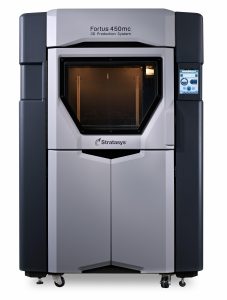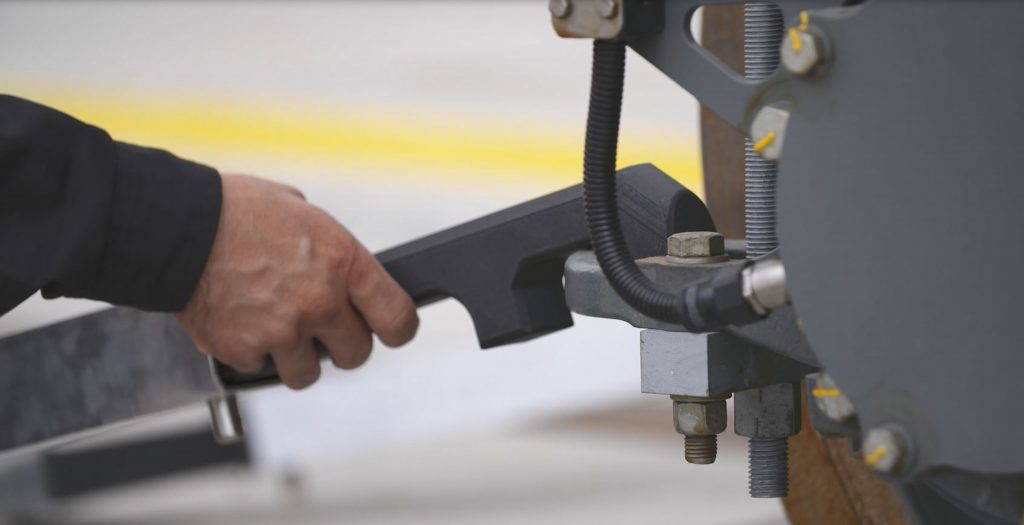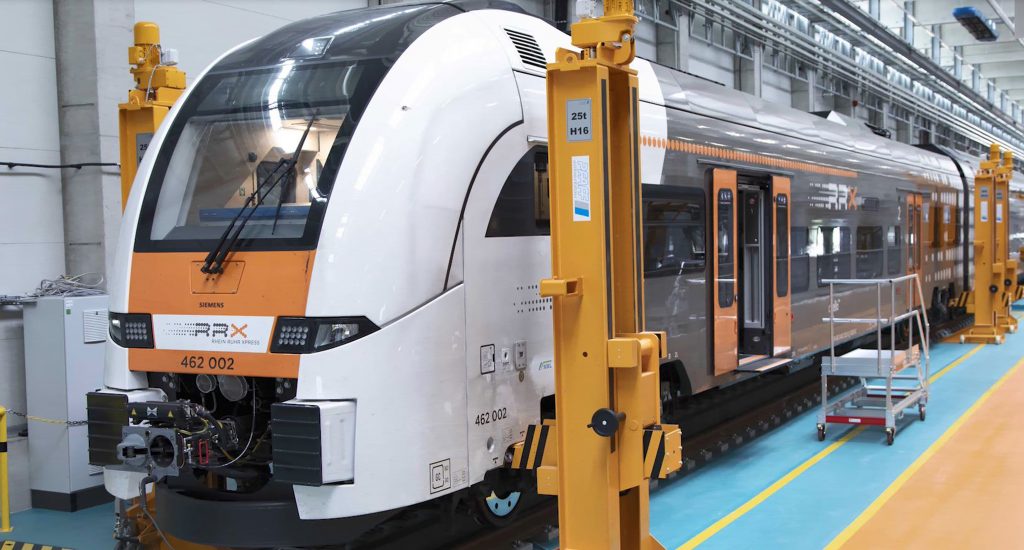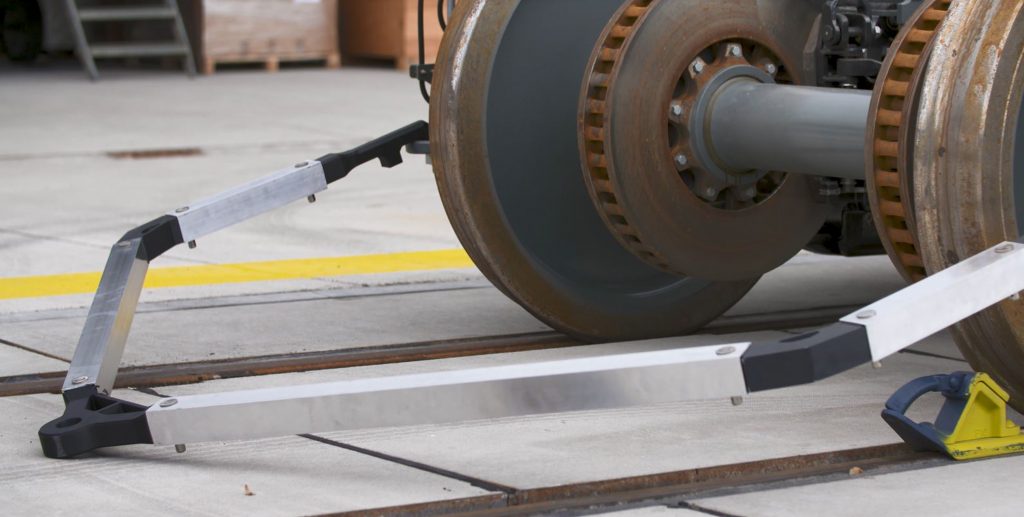More and more railway systems are finding that digital inventories and 3D printed replacement parts are an effective way to save money and time and to combat obsolescence. Siemens Mobility is the latest to jump on that train, so to speak, with the opening of its first digital rail maintenance center. According to Siemens, the center, located in Dortmund-Eving, Germany, offers the highest level of digitalization in the rail industry.
 The RRX Rail Service Center is expecting about 100 trains to enter the depot every month. To meet the demand, Siemens purchased a Stratasys Fortus 450mc Production 3D printer to produce replacement parts and tooling on demand. Thanks to its new 3D printing capabilities, Siemens Mobility will no longer need to keep a physical inventory of replacement parts, and has reduced the manufacturing time of these parts by 95%.
The RRX Rail Service Center is expecting about 100 trains to enter the depot every month. To meet the demand, Siemens purchased a Stratasys Fortus 450mc Production 3D printer to produce replacement parts and tooling on demand. Thanks to its new 3D printing capabilities, Siemens Mobility will no longer need to keep a physical inventory of replacement parts, and has reduced the manufacturing time of these parts by 95%.
“We believe our RRX Rail Service Center is the most advanced train maintenance center in the world,” says Michael Kuczmik, Head of Additive Manufacturing, Siemens Mobility GmbH, Customer Service. “Bringing together a range of innovative digital technologies, we can significantly increase the efficiency of our customer’s rail operations. Stratasys FDM additive manufacturing plays an integral role, enabling us to optimize spare parts for longer life cycles, at reduced cost and in shorter timeframes than ever before.”
The ability to 3D print customized replacement parts on demand has increased the company’s flexibility to meet customer requirements, Kuczmik continues.
“Every train has to go through maintenance several times a year,” he says. “As you can imagine, all our customers would like this process to be as quick as possible, but they still expect maximum levels of detail, safety and quality in the work we do. We also have to consider unplanned or last-minute jobs, and if you look at the different train models and companies we service, this requires a lot of customized solutions. This is where our Fortus 450mc fits in perfectly, providing us the ability to rapidly and cost-effectively produce one-off, customized production parts.”
 Before turning to 3D printing, Siemens Mobility used traditional manufacturing methods such as casting, which could take about six weeks to manufacture a final customized part. For one-off parts, this was financially unviable. To make it cost effective, the company would frequently cast large volumes of parts, which resulted in a lot of excess inventory and obsolete parts.
Before turning to 3D printing, Siemens Mobility used traditional manufacturing methods such as casting, which could take about six weeks to manufacture a final customized part. For one-off parts, this was financially unviable. To make it cost effective, the company would frequently cast large volumes of parts, which resulted in a lot of excess inventory and obsolete parts.
“Using the Fortus 450mc we can 3D print spare parts in a matter of hours,” says Tina Eufinger, Business Development Additive Manufacturing, Siemens Mobility Division. “Parts that took 6 weeks, can now be produced in 13 hours. Within a week, we can iterate and optimize the design and then 3D print a final, customized production-grade part. This has enabled us to reduce the manufacturing time of each part by up to 95%, which has significantly sped up our ability to respond to customers.”
Siemens Mobility is also using 3D printing to improve its tooling capabilities. An example is a connector tool that is used to maintain train bogies, which are the chassis or framework that carry the wheelset. These tools are extremely complex and require a high level of customization, so they are difficult to produce with conventional methods. The bogies also weigh several tonnes, so tough, durable materials are required to withstand the forces of the vehicles moving or braking.
Siemens Mobility is now using its Fortus 450mc to produce one-off tools customized to each bogie in only hours, using industrial-grade ULTEM 9085 thermoplastic material.
“Well-manufactured connectors are essential tools for the effective and safe maintenance of bogies, therefore finding additive manufacturing materials strong enough to withstand such pressures has been an important exercise,” says Kuczmik. “The ULTEM 9085 material is tough, enabling us to leverage all the customization benefits of 3D printing and replace our traditional manufacturing method for this tooling application.
“The ability to 3D print customized tools and spare parts whenever we need them, with no minimum quantity, has transformed our supply chain. We have reduced our dependency on outsourcing tools via suppliers and reduced cost per part, while also opening up more revenue streams by being able to service more low-volume jobs cost-effectively and efficiently.”
Discuss this and other 3D printing topics at 3DPrintBoard.com or share your thoughts below.
[Images provided by Stratasys]
Subscribe to Our Email Newsletter
Stay up-to-date on all the latest news from the 3D printing industry and receive information and offers from third party vendors.
Print Services
Upload your 3D Models and get them printed quickly and efficiently.
You May Also Like
Reinventing Reindustrialization: Why NAVWAR Project Manager Spencer Koroly Invented a Made-in-America 3D Printer
It has become virtually impossible to regularly follow additive manufacturing (AM) industry news and not stumble across the term “defense industrial base” (DIB), a concept encompassing all the many diverse...
Inside The Barnes Global Advisors’ Vision for a Stronger AM Ecosystem
As additive manufacturing (AM) continues to revolutionize the industrial landscape, Pittsburgh-based consultancy The Barnes Global Advisors (TBGA) is helping shape what that future looks like. As the largest independent AM...
Ruggedized: How USMC Innovation Officer Matt Pine Navigates 3D Printing in the Military
Disclaimer: Matt Pine’s views are not the views of the Department of Defense nor the U.S. Marine Corps Throughout this decade thus far, the military’s adoption of additive manufacturing (AM)...
U.S. Congress Calls Out 3D Printing in Proposal for Commercial Reserve Manufacturing Network
Last week, the U.S. House of Representatives’ Appropriations Committee moved the FY 2026 defense bill forward to the House floor. Included in the legislation is a $131 million proposal for...



































